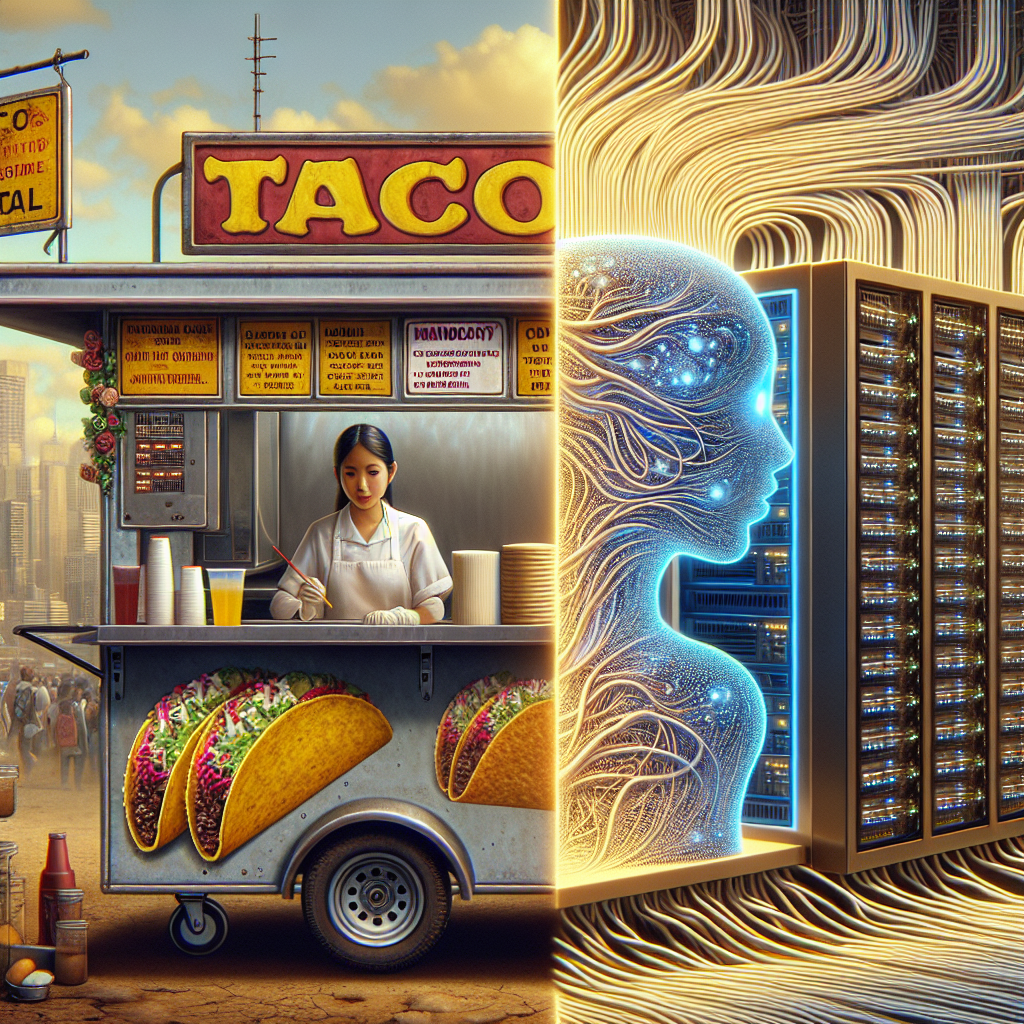Regulating technology is always a delicate balance, but when it comes to artificial intelligence, the pace and scope of regulation lag far behind the rules governing seemingly mundane aspects of everyday life—like taco carts. It may come as a surprise, but in many cities, local governments impose stricter regulatory oversight on food vendors than on cutting-edge AI technologies influencing industries worldwide. This disparity highlights an urgent need to rethink our approach to regulation and address the complexities unique to emerging technologies.
Understanding why regulation is heavier on taco carts than artificial intelligence reveals much about societal priorities, governance challenges, and the consequences of lagging oversight in the digital age. In this article, we explore the current regulatory landscape, the implications of under-regulating AI, and practical strategies for creating balanced, effective frameworks that foster innovation while protecting public interests.
Why Taco Carts Face Strict Regulation
Food vendors, including taco carts, are subject to comprehensive regulations designed to ensure public safety and maintain community standards. These regulations are critical because:
– **Health and Safety Concerns:** Foodborne illnesses can spread rapidly without rigorous hygiene protocols.
– **Local Zoning and Licensing:** Cities control where taco carts can operate, limiting nuisances and traffic disruptions.
– **Operational Standards:** Regular inspections, proper equipment, and waste management are enforced diligently.
For example, in cities like Los Angeles and New York, taco carts often require multiple permits—from food handler certifications to street vending licenses—alongside frequent health department inspections. Such regulatory measures demand significant compliance efforts and costs from small business owners but reflect the high priority placed on public health.
Artificial Intelligence: A Regulatory Blind Spot
In stark contrast, artificial intelligence technologies—including machine learning algorithms, autonomous systems, and decision-making tools—largely operate under a patchwork of minimal regulation. This regulatory gap exists despite AI’s growing impact on:
– Employment markets and job displacement.
– Data privacy and surveillance concerns.
– Algorithmic bias and fairness in decision-making.
– Autonomous vehicles and critical infrastructure control.
Several factors contribute to this disparity:
– **Complexity and Novelty:** AI’s technical intricacies and rapid evolution make legislative action challenging.
– **Cross-Jurisdictional Nature:** AI technologies transcend geographic and regulatory boundaries.
– **Unclear Risks vs. Benefits:** While AI offers immense potential, its risks are often intangible or long-term, complicating regulation.
The result? AI deployment in finance, healthcare, law enforcement, and social media largely proceeds with inconsistent or voluntary oversight. For instance, facial recognition technologies have seen limited and fragmented regulatory efforts compared to the stringent rules governing street food vendors.
The Costs of Insufficient AI Regulation
Failing to regulate AI technologies effectively can have wide-ranging implications:
– **Erosion of Privacy:** Unchecked data collection by AI systems can compromise individual privacy at scale.
– **Bias and Discrimination:** Without clear standards, biased algorithms can perpetuate social inequalities.
– **Safety Risks:** Autonomous systems, such as self-driving vehicles, pose safety threats if unregulated.
– **Undermining Public Trust:** Lack of transparency breeds skepticism and resistance to beneficial AI innovations.
Illustrative cases include biased hiring algorithms leading to discrimination lawsuits and unregulated AI chatbots disseminating misinformation. These examples underscore the urgency of closing regulatory gaps.
Principles for Effective AI Regulation
Drawing lessons from successful food vendor regulations, policymakers can adopt several principles to regulate AI better:
1. **Transparency:** Mandate clear disclosures about AI functionalities and data usage.
2. **Accountability:** Define liability for harms caused by AI systems.
3. **Inclusiveness:** Involve diverse stakeholders—developers, users, affected communities—in the regulatory process.
4. **Adaptability:** Create flexible frameworks that evolve with technological advancements.
5. **Safety and Fairness:** Establish standards to prevent harm and discrimination proactively.
These guiding tenets facilitate balanced regulation, fostering innovation while addressing risks realistically.
Emerging Regulatory Frameworks and Global Efforts
Around the world, governments are beginning to recognize the need for AI regulation, proposing frameworks that blend innovation promotion with risk mitigation.
– **The European Union’s AI Act:** A pioneering initiative classifying AI systems by risk levels and imposing stringent controls on high-risk applications.
– **United States’ Sectoral Approaches:** Tailored frameworks focusing on privacy, healthcare, and autonomous vehicles.
– **OECD’s AI Principles:** Recommendations emphasizing human rights, fairness, and transparency.
Although these efforts are encouraging, widespread adoption and enforcement remain limited compared to traditional consumer-facing regulations like those on food vendors.
What Can Businesses and Communities Do Now?
While policymakers play a critical role, businesses and communities can proactively engage with AI governance by:
– Developing internal ethics guidelines for AI use.
– Participating in public consultations on AI-related policies.
– Investing in AI literacy and responsible innovation.
– Monitoring AI system impacts and sharing feedback with regulators.
Taking these steps helps shape a regulatory environment that reflects real-world needs and ethical considerations.
Rethinking Regulation: Toward Equilibrium
The fact that we regulate taco carts more than artificial intelligence symbolizes a broader misalignment in how society manages risk and innovation. As AI technologies increasingly permeate daily life, a strategic pivot toward thoughtful, dynamic regulation is paramount. Balancing the prevention of harm with the encouragement of technological progress will require collaboration among governments, industry, academia, and civil society.
By embracing transparent, accountable, and adaptable frameworks, we can harness AI’s transformative potential while safeguarding individual rights and social well-being.
Making Sense of the Regulation Landscape Today
– Local governments enforce extensive licensing and hygiene rules for taco carts to protect public health.
– AI regulation remains fragmented, often outdated or insufficient given its societal impact.
– Lessons from food vendor regulations can inform AI governance principles emphasizing safety and accountability.
– Emerging international AI frameworks signal a shift toward comprehensive regulation, though challenges persist.
– Stakeholders beyond regulators—including businesses and citizens—have vital roles in advancing responsible AI use.
The regulatory imbalance illustrated by comparing taco carts and AI highlights an urgent call to action: as AI reshapes our world, our approach to regulation must evolve with it.
Ready to navigate the AI regulatory landscape for your business or project? Visit https://automatizacionesaiscend.com to connect with experts who can guide you through smart, compliant AI deployment strategies today.



